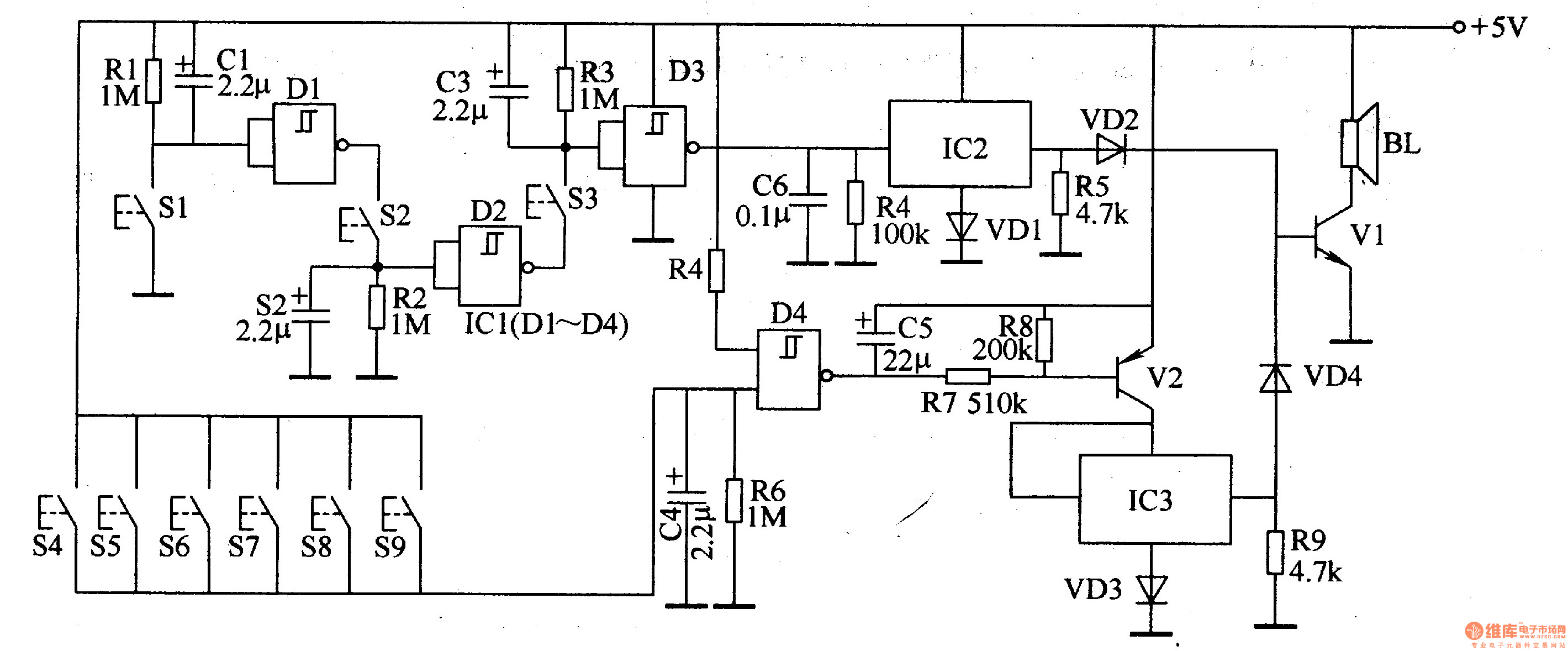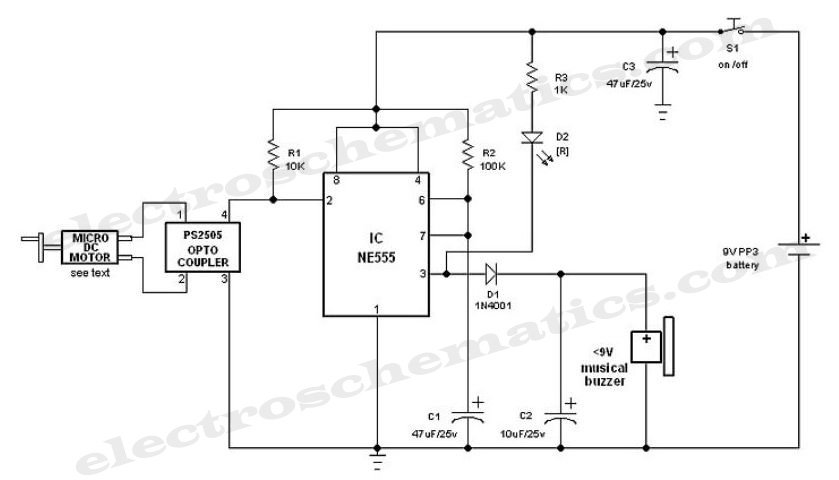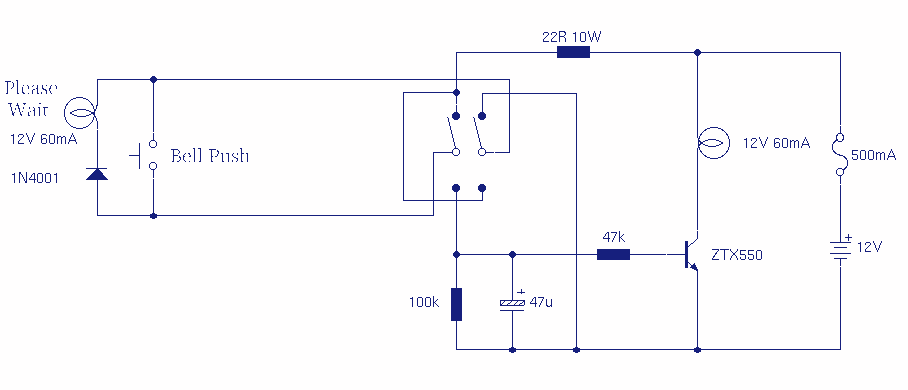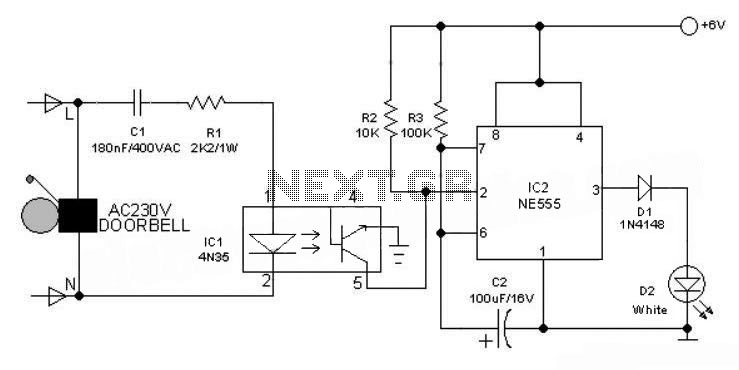
Doorbell Cascade
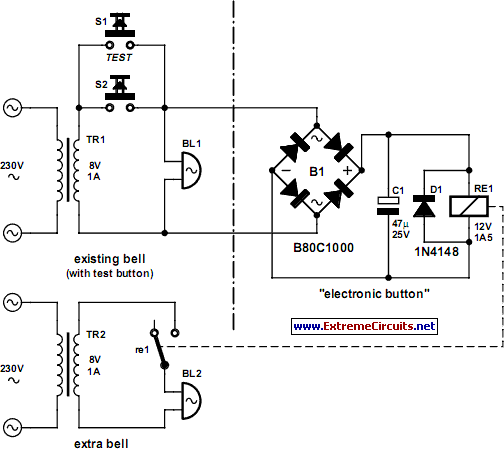
In certain situations, it may be necessary to adopt a more complex approach, even when simpler alternatives exist. This applies in the current scenario, where the objective is to install a second doorbell.
To implement the addition of a second doorbell, a comprehensive understanding of the existing doorbell circuit is essential. The typical doorbell system consists of a transformer, a push button, and a chime. The transformer converts the standard household voltage (usually 120V AC) to a lower voltage (typically 16V AC) suitable for the doorbell system.
In the proposed modification, the circuit needs to accommodate a second push button and chime without disrupting the functionality of the original doorbell. This can be achieved by wiring the second push button in parallel with the first one. When either button is pressed, the circuit will complete, allowing current to flow to the chime.
The installation involves the following steps:
1. **Power Supply**: Ensure the transformer can handle the load of both doorbells. If the existing transformer is rated for a lower wattage, it may need to be replaced with one that has a higher capacity.
2. **Wiring**: Use 18 AWG doorbell wire for the connections. Run a wire from the transformer to both push buttons, connecting them in parallel. This means that both buttons will share the same power source.
3. **Chime Connection**: Connect the output from both push buttons to the chime. The chime should also be compatible with the voltage provided by the transformer.
4. **Testing**: After completing the wiring, test each button individually to ensure that the chime activates correctly from both locations.
5. **Mounting**: Securely mount the second push button in the desired location, ensuring it is easily accessible.
By following these guidelines, the installation of a second doorbell can be accomplished efficiently, enhancing the functionality of the existing doorbell system.Sometimes you have to do it the hard way, even if doing it the easy way is an option. That is the case here. The intention is to add a second doorbell in.. 🔗 External reference
To implement the addition of a second doorbell, a comprehensive understanding of the existing doorbell circuit is essential. The typical doorbell system consists of a transformer, a push button, and a chime. The transformer converts the standard household voltage (usually 120V AC) to a lower voltage (typically 16V AC) suitable for the doorbell system.
In the proposed modification, the circuit needs to accommodate a second push button and chime without disrupting the functionality of the original doorbell. This can be achieved by wiring the second push button in parallel with the first one. When either button is pressed, the circuit will complete, allowing current to flow to the chime.
The installation involves the following steps:
1. **Power Supply**: Ensure the transformer can handle the load of both doorbells. If the existing transformer is rated for a lower wattage, it may need to be replaced with one that has a higher capacity.
2. **Wiring**: Use 18 AWG doorbell wire for the connections. Run a wire from the transformer to both push buttons, connecting them in parallel. This means that both buttons will share the same power source.
3. **Chime Connection**: Connect the output from both push buttons to the chime. The chime should also be compatible with the voltage provided by the transformer.
4. **Testing**: After completing the wiring, test each button individually to ensure that the chime activates correctly from both locations.
5. **Mounting**: Securely mount the second push button in the desired location, ensuring it is easily accessible.
By following these guidelines, the installation of a second doorbell can be accomplished efficiently, enhancing the functionality of the existing doorbell system.Sometimes you have to do it the hard way, even if doing it the easy way is an option. That is the case here. The intention is to add a second doorbell in.. 🔗 External reference
